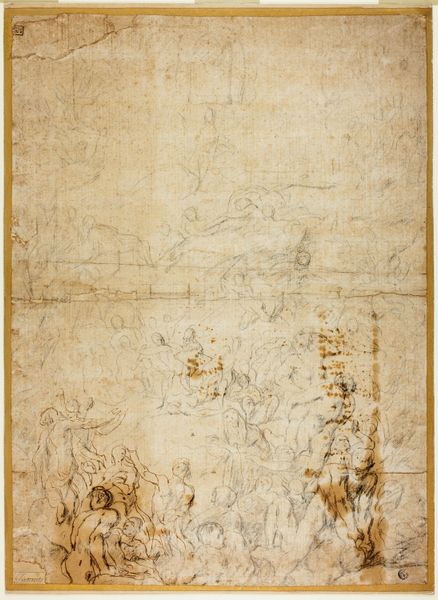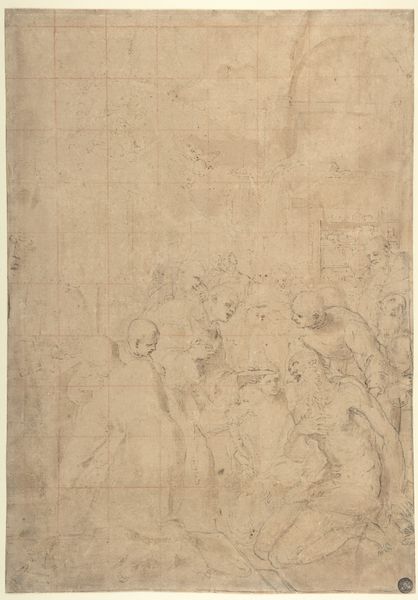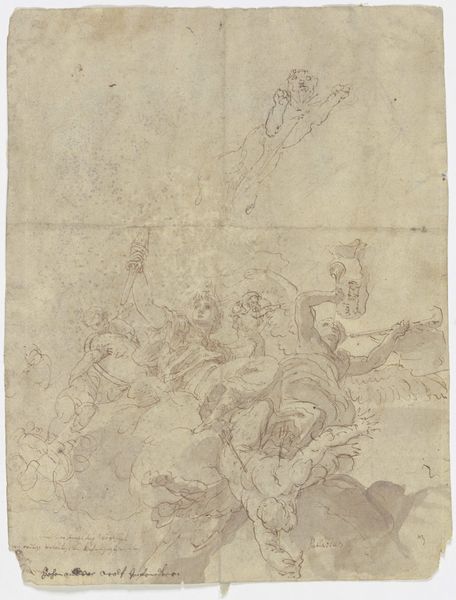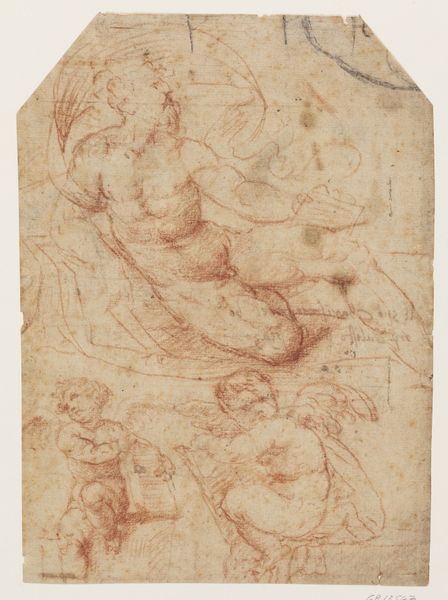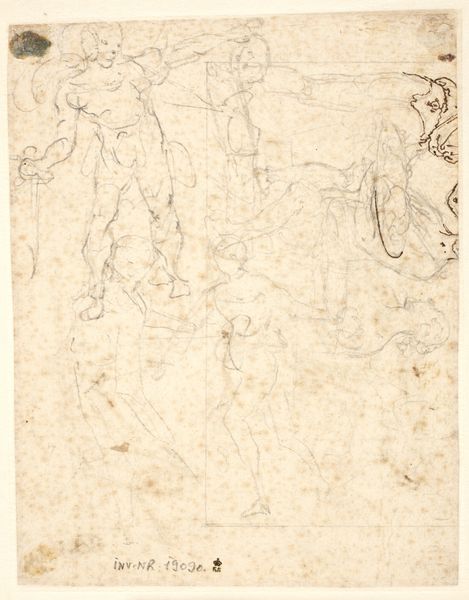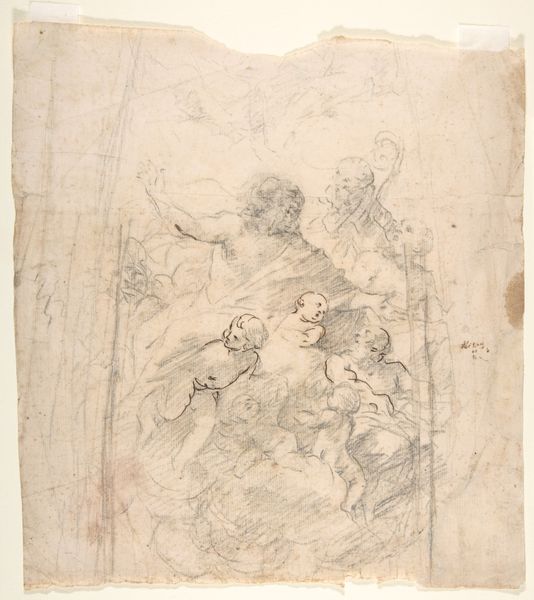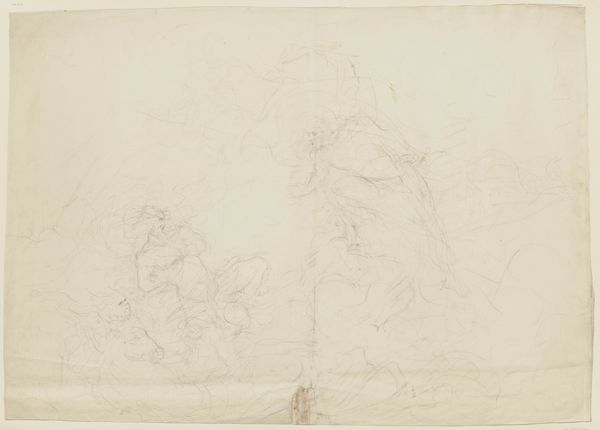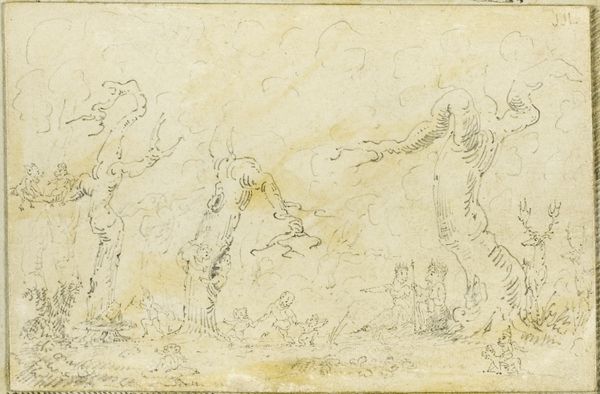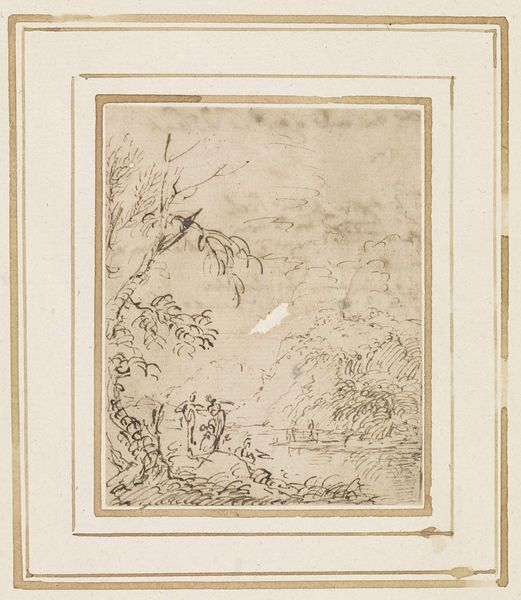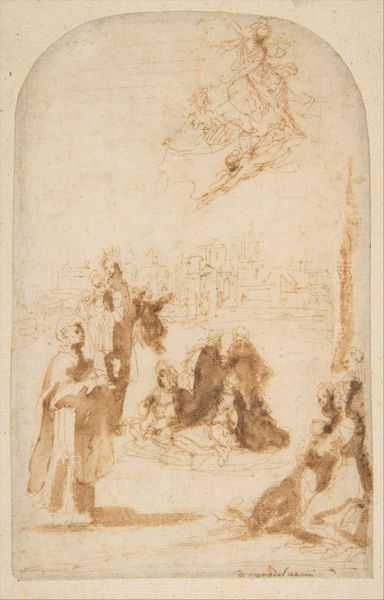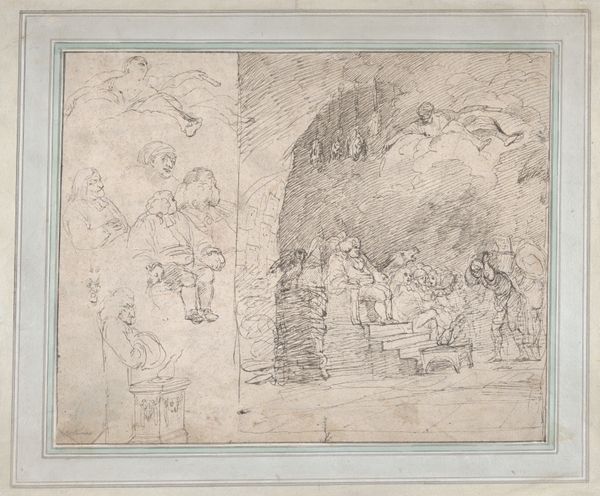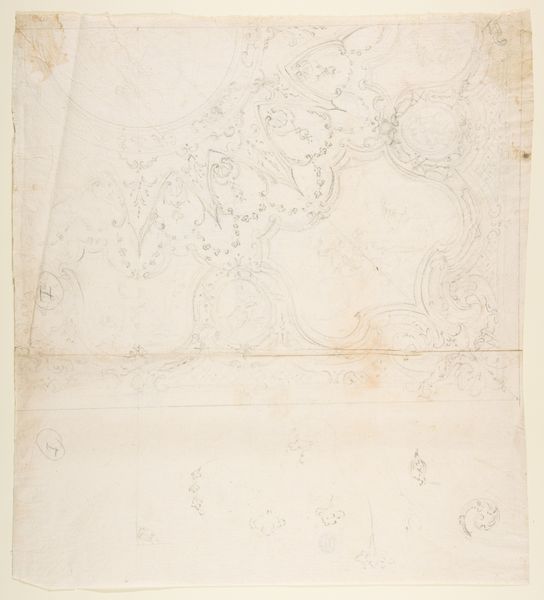
Banquet Scene: A Seated Warrior Attended by a Number of Servants (recto); Back View of a Standing Man in a Long Cloak (verso) 1536 - 1614
0:00
0:00
drawing, print, etching
#
drawing
#
narrative-art
# print
#
etching
#
etching
#
mannerism
#
figuration
#
history-painting
#
italian-renaissance
Dimensions: 11 x 8 1/4in. (27.9 x 21cm)
Copyright: Public Domain
Editor: Here we have Cesare Nebbia’s "Banquet Scene: A Seated Warrior Attended by a Number of Servants" made sometime between 1536 and 1614. It's an etching and drawing, a combination I find quite intriguing. The scene seems…chaotic, almost frantic. What can you tell us about this piece? Curator: It’s important to consider the materials and processes involved in creating this drawing, which straddles the line between "high art" and craft. How does the use of etching, a printmaking technique, challenge our notions of the unique artwork versus the mass-produced object? What does it tell us about Cesare Nebbia’s studio practice, or about the culture of art production in Italy at the time? Editor: I hadn’t thought about it that way. So, you’re saying the *making* of the artwork is just as important, or even *more* important, than the banquet scene it depicts? Curator: Absolutely! The scene itself depicts an idealized vision of aristocratic life, of power relations manifest as labour and consumption. But it’s crucial to analyze *how* that vision was constructed. Notice how Nebbia has clearly defined the space. How might that inform your reading? Editor: I see, it makes me think about how art functioned within a specific social and economic system. Almost like it’s trying to say that materials and labour matter! Curator: Precisely! Consider the economics of artistic production at this time. Etchings like this would have been more accessible, and might be disseminated much wider for reproduction. How do such processes impact both Nebbia's agency, and also the reception of the artworks and its underlying ideas? Editor: I am so glad you made me aware of the materiality! I think it's a unique insight into Nebbia's practice, and even into the Renaissance period as a whole! Curator: Indeed. By focusing on these details, we move beyond the surface of the image to explore the intricate network of production, consumption, and social relations.
Comments
No comments
Be the first to comment and join the conversation on the ultimate creative platform.
